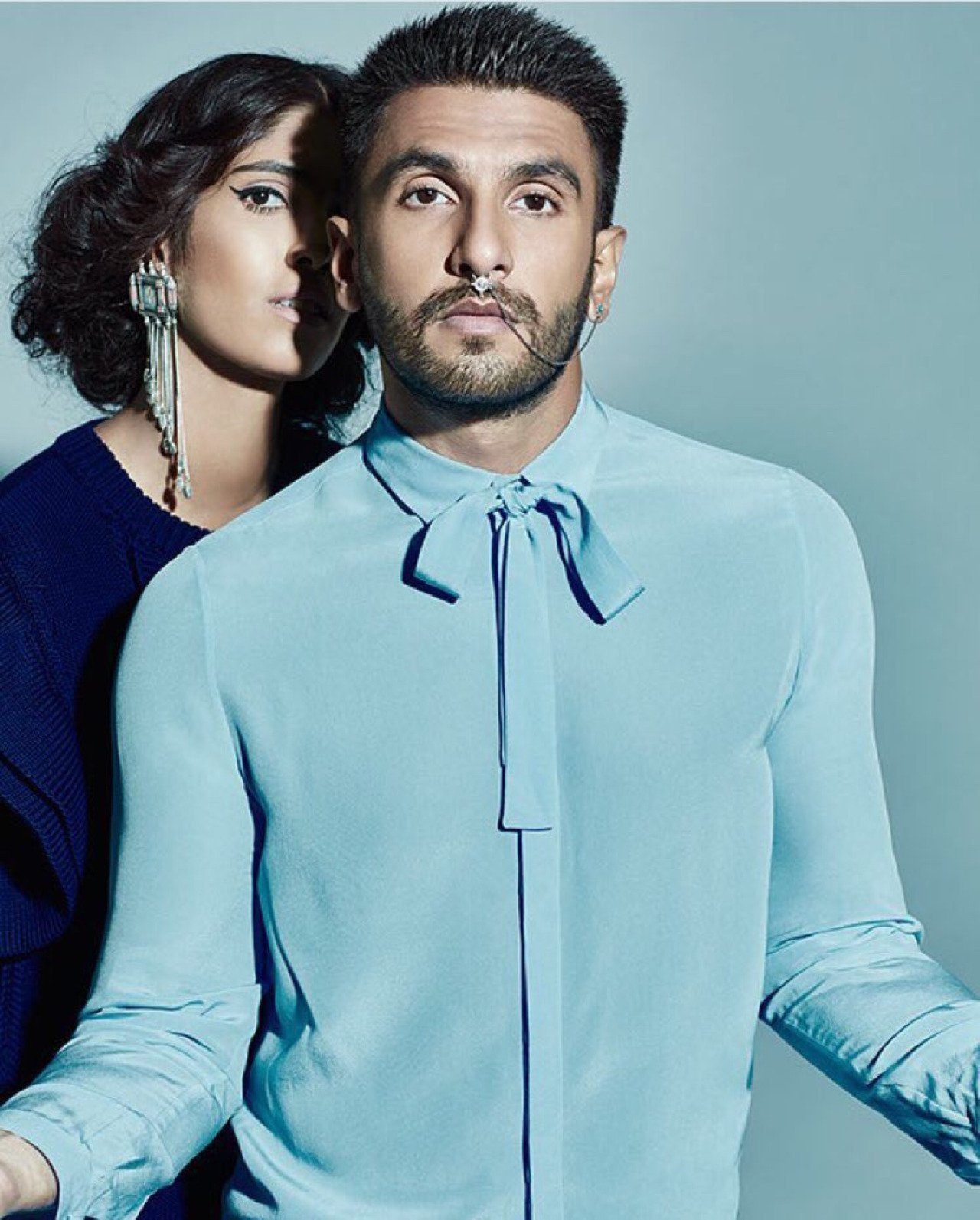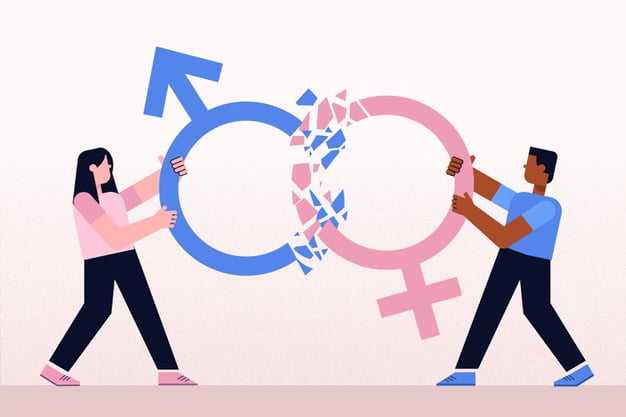It would not be an exaggeration to say that we have all, at some point, been bewildered at the gendered associations some products and activities have been assigned. Statements such as “girls should smile more” when there is no reason for such mirth, and “boys should not cry” which seeks to protect some unseen fountain of masculine pride even amidst abject misery are common examples of how gender is tied together with the conduct of a person.
These concepts have been deeply internalised and they seep into the foundations of our culture, family and tradition through which they are fortified and normalised. The constructs of these gender binaries reveal themselves when one ventures outside the safe borders of the structures that sustain such gender stereotypes. This is where off late, several cisgender men and gender queer influencers are stretching the boundaries of spaces that have perpetually been heavily gendered. The following is a list of activities that they are taking up and consequentially making accessible to anyone, regardless of gender or sexuality.
1. Skincare
Starting with schoolboys stubbornly refusing to apply lip balm on painfully chapped lips for fear of looking ‘girly’, the idea of taking care of one’s skin somehow got categorised as ‘feminine’. The stereotype took over from there, painting all things feminine as superficial and frivolous. Breaking this gender bias in taking care of one’s skin and the occasional self-pampering, are several influencers who have lately taken over social media by storm. Shakti Singh Yadav and Yashwant Singh are influencers who have come up with several videos on using everyday things like face wash, sunscreen and moisturisers to keep skin healthy. YouTuber Sahil Gera who goes by the handle The Dynamite Male has also made ample content on skincare routines, understanding skin-related problems and suggesting the best products and methods to tackle them for men. These individuals are a few among the many, who have pitched in to show that skin, unlike narrow mindsets, does not discriminate between genders.
2. Make-up
Taking self expression and beauty one step further, popular social media personalities like Siddharth Batra, Ankush Bahuguna and Shantanu Dhope reinforce the fact that make-up can be for anyone who likes it. The origins of make-up can be traced back to the Egyptians when kohl and other beauty products were used by people from all genders. As is the case with most gendered things, patriarchy caught up with it and associated ‘feminine’ traits to make-up. As a historically subjugated gender, the activities associated with it also faced discrimination. By extension, it implied that men are inherently above the ‘vain preoccupation’ with enhancing appearances that necessitated make-up among women. While the above mentioned influencers are dismantling the underlying power structures and gender dynamics behind using make-up, the obvious visibility, privilege and security that cis men enjoy while doing it is also needs to be acknowledged.
Also read: 10 Posters That Show How Bollywood Reinforces Gender Stereotypes
3. A variety of fabrics, prints and silhouettes
Introducing options in sheer fabric, going for florals and bold prints coupled with plunging necklines, flowing flares and a few ruffles, fashion designers and artists are blurring the line between gender binaries in the clothing industry. Designers like Sumiran Kabir Sharma (Label-‘Anaam’), and Sidhartha Tytler have incorporated fluid and non-binary looks into their collections and personal wardrobes. They are incorporating low cuts, flowy material and styles such as drapes and skirts that are traditionally associated with female fashion into menswear. As a drag artist and a fashion icon, Sushant Divgikr is also known for bold styles that stop at no gender-based boundary. These trendsetters are paving the way for gender-neutral fashion that includes anyone into the fold regardless of sex or sexuality.
4. An extensive list of clothing options
Skirts, heels, crop tops, high-waisted pants – all of these apparels are generally understood to be exclusively restricted to girls. This notion is being challenged by several people who choose not to assign gender to clothing and just let self-expression lead the way. The un-gendering at the ramps continue into the wardrobes of several cis men and gender queer individuals who stand out with their unreserved experimentation with styles, having no concern for gender labels. Drag artist Alex Mathew aka Maya is another exemplary icon who sees no gender in art or clothes. Disassociating gender and sexuality from drag, Alex has also performed in a sari completing the look with flowers in the hair.
Kiran Jopale is a dancer who has taken to pulling off stunning choreographies in equally stunning heels. Comments about dance or accessories being ‘too feminine’ did not stand in the way of Kiran exploring this passion to the fullest. Kiran is now a dance teacher and choreographer who has also formed a team and founded a studio.

5. Jewelry
While images of our ancient kings adorning heavy earrings along with extravagant necklaces are nothing out of the ordinary, ironically, the idea of the modern man embracing similar looks raises quite a few eyebrows. Detaching the stigma around cisgender men and gender fluid individuals wearing jewelry has contributed to a spike in the popularity of jewelry among them as reported by the Economic Times. Fashion enthusiasts Siddharth Batra and Shantanu Dhope do not shy away from incorporating jewellery into their styles, thereby creating unique and practical looks. Grander pieces such as nose rings and jhumkas also feature in the outfits often flaunted by Dhope. Indian celebrities like Aamir Khan and Ayushmann Khurrana have also taken to nose pins which were conventionally seen as an exclusively female ornament.

6. Being a stay at home partner
This is a role assigned to the woman in a marriage/relationship. It is so ingrained in the minds of people that it almost pains the society to think of the reverse. The regressive discomfort of men being stay at home partners often translates into prying questions and comments involving “masculinity” and gender roles. But there are cisgender men like Lahar Joshi, Madhu Prabhakar and Sid Balachandran who normalise being stay at home partners. These men prioritize spending quality time to raise their children over the gendered stigma of the woman being the working member of the household. While this shift is still seen as unconventional, the goal is to one day see nothing revolutionary about one partner taking over child care and maintaining the house over the other.

Image: The Better India
7. Cooking
In continuation of the previous section, this has been an age-old battle and the situation has improved in cities where cis men do take up responsibilities in the kitchen quite willingly. But Aditya Bhalla’s article stands out in addressing the privilege cisgender men enjoy by being exempted from learning life skills such as cooking and cleaning under the firm belief that a woman will be there to do it for them in the future. His personal experience reveals his own grandmother to be the primary proponent of what he now understands as the “sexist kitchen”. With more cisgender men recognising and growing out of this internalised sexism, we can be hopeful that more egalitarian family structures will eventually be formed.
Also read: Are School Curriculums Promoting Gender Stereotypes?
The hyper-gendered reality that we often find ourselves in has always been at play in the background of everything. But it only makes itself known upon close scrutiny as seen in the above list which attempts to disentangle routine activities and personal choices from the grip of deeply entrenched gender associations.
It is however gratifying to find that there have been endeavours to question conventions and release gender from its restraining binaries, boundaries and unnecessary implications. These cisgender men and gender queer influencers are hopefully just the beginning of a society that slowly unravels patriarchal undertones and toxic stereotypes that have been sustaining gender-based divisions in every aspect of life. This is not to glorify them for their participation in parity, but to acknowledge their roles in amplifying the need for individuals across genders to step into a gender fluid sensibility.
This is by no means an exhaustive or representative list. Suggestions to add to this list are welcome in the comments section.
Editor’s Note: This piece has been edited to better reflect the diversity of the gender identities of the above mentioned influencers. Previously, the piece mistakenly identified all of them as cis men. We apologise for the error and stand corrected.
About the author(s)
Akhila is a first year MA student pursuing English and Communication Studies at Christ University. She is hopeful about creating change through writing and academic praxis, and when that gets a little tiring, escapes into books and TV shows.




